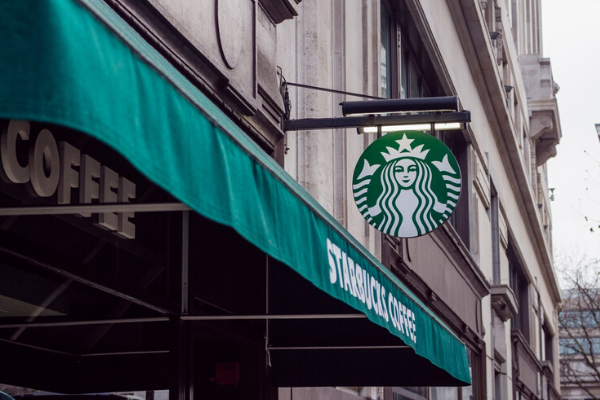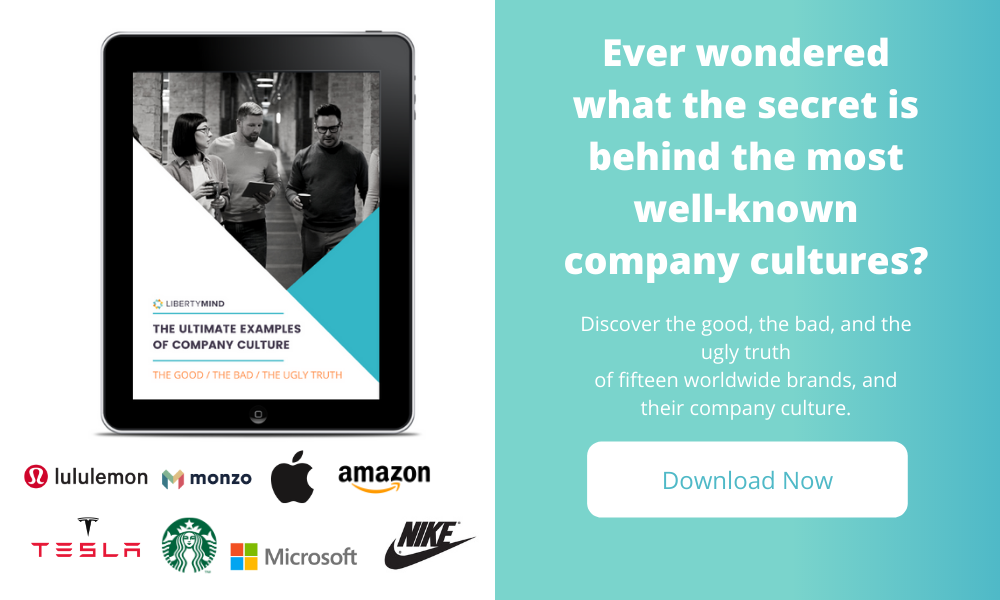Culture Crash to a Culture King - The Starbucks Company Culture Lessons

You might not immediately consider Starbucks to have a company culture to follow. After all, most of us simply know it from face-value – that hot cup of coffee when you’re on the road, or that cool but comforting space you visit to catch up with friends.
But Starbucks has one of the most-renowned reputations for a strong company culture, that’s worth not only looking at, but understanding on a deeper level.
There’s no magic coffee beans involved. In fact, many claim that Starbucks’ distinct company culture is what sets it apart from its vast array of fast-coffee competitors. Enabling the coffee chain to not only survive a near death experience, but giving it the world-wide domination it has secured today.
Who would have thought coffee could be the place to start with company culture?
I delve into the makings of Starbucks company culture, and reveal why even as a retailer, it’s essential to put a firm focus on your culture.
The Start of Starbucks Culture Change
Where does a culture shift come from? – It’s one of the biggest questions I hear at Liberty Mind. After all, what is it that makes people want to work on their company culture. Is culture only something those big corporations can afford, or is it much more than that?
For Starbucks, the shift to its emphasis on culture came at a time when the business almost disappeared. Yes – a life without pumpkin spice lattes!
In February 2007, right before the financial crisis, Starbucks started to lose its edge. Committing a number of commercial faux pas, it forgot that excess doesn’t bring success. As a result, Starbucks closed 900 stores, laid-off hundreds of employees, and saw its share price drop by 40%.
To many, this was yet again another story of corporate greed getting in the way of true business success.
After exiting Starbucks, CEO and Chairman Howard Schultz returned to the company in January 2008 to try and steer it back into clear waters. Schultz immediately identified a number of poor decisions which had been made, which were even leaked in an email.
The biggest point Schultz made was that Starbucks company culture had taken a back-seat. Due to the lack of investment in culture, Starbucks teams were no longer highly trained or as deeply committed as they once were.
As CEO, Howard Schultz first act on returning to Starbucks was to reignite the company culture.
Famously, this began with Schultz shutting down all of the company’s stores for three and a half hours to drill everyone on the company’s mission and values. After this, all 10,000 of the store managers were then sent on a gathering to rediscover their sense of mission and purpose.
According to reports, Schultz believed that Starbucks had “forgotten what we stand for.”
From a place of pain and discomfort, is where Starbucks realised that culture mattered.

Seeing the Culture Gap
Unfortunately, most organisations treat culture and business strategy as separate entities.
Most leaders know that culture is important, but it’s at the bottom of the ‘to-do-list’. It only becomes a real pain when a negative culture begins to hurt the company’s performance.
However, after this, leaders don’t know what to do about improving their company culture or know where they should even start.
Some companies attempt to improve their company culture by launching ‘initiatives’, but these are often transparent to employees, leaving little to be desired, and no engagement driven.
For those companies who have a disconnection between company culture and strategy, they often struggle to make the link that these areas should ultimately be entwined.
No matter the business type or industry, every company has a culture – it’s behaviours, actions, values, mindsets. But company cultures can be complex, with lots of elements all needing to work together. Some of these elements can have both positive and negative implications.
Starbucks Mission
As stated, the Starbucks Mission is “ To inspire and nurture the human spirit – one person, one cup and one neighborhood at a time.
For an American corporate culture, this is one of the most actionable and relatable mission statements I have seen.
It provides connection on a much deeper level than to just “sell great coffee”. Everyone’s doing that, aren’t they?
So instead, Starbucks have built their company culture on the experience of being part of Starbucks, no matter who you are – employee or customer.
Starbucks Values
The values of any business are the expected behaviours of those people who work within the business. From CEO to Barista. The expectation is laid out from the start of how everyone must work together to achieve the Starbucks mission.
The values at Starbucks include;
- Creating a culture of warmth and belonging, where everyone is welcome.
- Delivering our very best in all we do, holding ourselves accountable for results.
- Acting with courage, challenging the status quo and finding new ways to grow our company and each other.
- Being present, connecting with transparency, dignity and respect.
The Starbucks culture is hinged on these values, and everything they do draws you back to them.
Both Starbucks mission statements and values are clearly articulated on their website, stating clearly what can be expected from a life working at Starbucks.

Starbucks Global Culture
Starbucks is available worldwide. It’s a global brand, recognised everywhere. If I was a betting person, I’d probably even guess they’ll be the first coffee-chain on the moon!
The fact is, despite having franchises, Starbucks puts a big emphasis on company culture. It’s absorbed into every area of the business, even as far as the operations of franchisees and licensees.
When Starbucks company culture has become a vital asset to its business success it now works harder than ever to ensure its culture reputation exists even outside the direct corporation.
Starbucks Culture Type
‘Culture type’ plays a large part in understanding how a company culture operates and what it believes in. Culture type matters when you’re looking to improve your own culture because it is how others see your business and connect with it. Whether that’s consciously or subconsciously, we all make decisions based on our own values about the brands and businesses we want to support. Hence why it’s such an essential part of creating a strong company culture.
At Starbucks, the company culture is very much a culture of belonging, inclusion and diversity. These aspects are even present in its company culture actions and behaviours as an organisation. From the way they serve customers, right the way to how the business employs its team. You may even recognise some of these features from your own Starbucks experience;
- Servant leadership (putting employees first”)
- Relationship-driven approach (hence why they want to know your name)
- Collaboration and communication
- Openness
- Inclusion and diversity

How Starbucks Culture Comes to Life
Any strong company culture lives and breathes its company’s mission and values – they don’t just put the words up on the wall and hope that everybody gets it. Oh no – they take real action, and shape behaviours and attitudes.
At Starbucks they live inclusion and diversity through a number of culture initiatives. For example, they have a goal to employ 10,000 refugees globally, and hire 25,000 veterans and military spouses. Even the application for Starbucks is designed from the beginning to the end, to provide each candidate with dignity and respect. They actively hire individuals with disabilities. Mark in their Humans Resources department who is blind actively supports the organisation in making Starbucks more accessible.
Starbucks company culture is not just about the decor of the stores – it exists because the people working in every level of the company understand how their work contributes to the greater mission of the company. There’s a common purpose that they are all following, which means they naturally follow the attitudes and behaviours that are expected of them. They don’t need to follow a script.
As a large American organisations, Starbucks has invested heavily in supporting its employees. In fact, at Starbucks you’re known as a ‘partner’ not just an employee. Even part-time staff in the US, receive stock options and health insurance. And during that dismal year of the financial crisis they were one of the few companies still investing in staff training, and courses to provide individuals with credits to gain entry into higher education.
At Starbucks they also pay above minimum wage, and in 2018 achieved race and gender pay equity.
Key Points to Learn About Starbucks Company Culture
Starbucks may sell coffee – but they’ve also created a company culture that has enabled them to become the biggest coffee-chain in the world. Global domination doesn’t just come from what you sell – it comes from the community you build around it.
Whether you’re a retailer, or just keen to improve you company culture. Here are the key lessons to learn from Starbucks.
- Pain can often remind you that company culture matters
Even if your company has gone through a rough time, it can still come out better and stronger than it was before. Don’t see the issue as a setback, but a step in the right direction. Starbucks re-assed where they were going wrong and got their team involved in the culture change.
- Double down on what you do best in your culture
Rather than trying to fix the negative aspects straight-away in their company culture, Starbucks looked at what they were great at, and turned the dial-up on that area first. You should identify your positive attributes in your company culture first, and accelerate these. The work on those bigger problems as these will take longer to fix.
- Give meaning to your mission
It’s easy to dismiss mission statements as fluffy words that don’t provide any real-action. But the opposite is true. A strong mission statement should make your team ‘feel’ something. It should give them a sense of purpose in their role, and help make them understand how they are acting towards that big goal. It also creates connections between team members, and towards customers.










